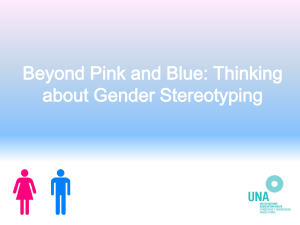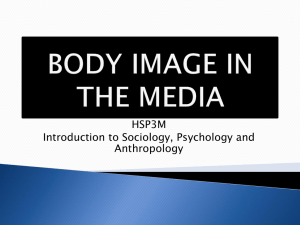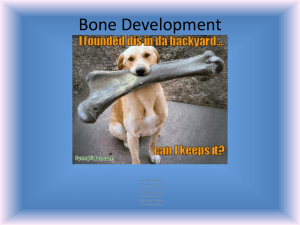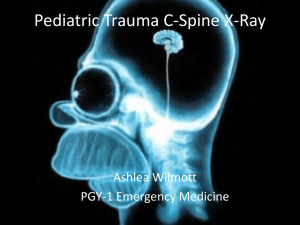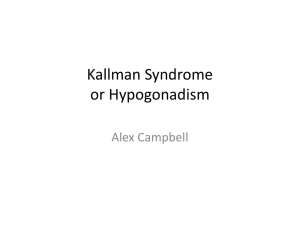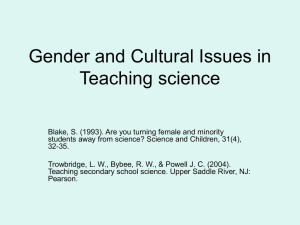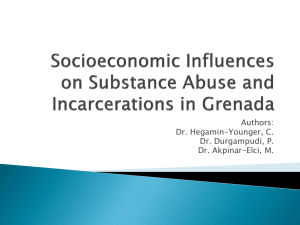Radiological Bone Age Assessment by Appearance of Ossification
advertisement
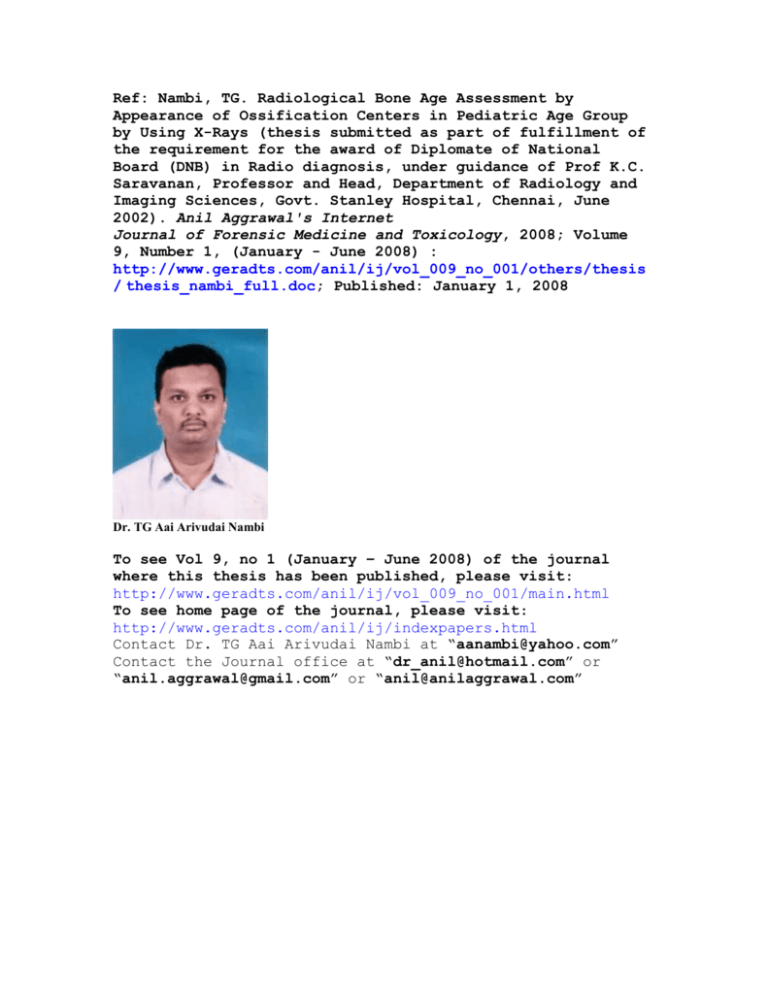
Ref: Nambi, TG. Radiological Bone Age Assessment by Appearance of Ossification Centers in Pediatric Age Group by Using X-Rays (thesis submitted as part of fulfillment of the requirement for the award of Diplomate of National Board (DNB) in Radio diagnosis, under guidance of Prof K.C. Saravanan, Professor and Head, Department of Radiology and Imaging Sciences, Govt. Stanley Hospital, Chennai, June 2002). Anil Aggrawal's Internet Journal of Forensic Medicine and Toxicology, 2008; Volume 9, Number 1, (January - June 2008) : http://www.geradts.com/anil/ij/vol_009_no_001/others/thesis / thesis_nambi_full.doc; Published: January 1, 2008 Dr. TG Aai Arivudai Nambi To see Vol 9, no 1 (January – June 2008) of the journal where this thesis has been published, please visit: http://www.geradts.com/anil/ij/vol_009_no_001/main.html To see home page of the journal, please visit: http://www.geradts.com/anil/ij/indexpapers.html Contact Dr. TG Aai Arivudai Nambi at “aanambi@yahoo.com” Contact the Journal office at “dr_anil@hotmail.com” or “anil.aggrawal@gmail.com” or “anil@anilaggrawal.com” 2 3 4 Introduction This study aims to find out the age of appearance of ossification centres of the bones radius, ulna, short bones, and lower end of humerus and compare with that of the Greulich-Pyle standard and other studies done in India. This study also aims to find out if there is significant difference in the age of appearance of ossification centres of today’s children of the population of Chennai (Madras) with that of Greulich-Pyle standard and other studies in India. There are various methods of determining the bone age radiological assessment. The most widely accepted method of determining skeletal bone age is that of Greulich-Pyle, described in the book “Radiographic atlas of skeletal development of the hands and wrist”1. The atlas was derived from the American white children of upper class socioeconomic level during 1930s. The Indian population differs widely from the western population in hereditary, dietary, socio-economic and ethnic factors. Studies done in India are few. Galstaun2 in 1930 and 1937 has done a study in Bengali population. Bajaj3 in 1967 has done a study in Delhi. Other studies done in India are Pillai4 (Madarasis) in 1936, Hepworth5 (Punjabis) in 1929, Basu and Basu6 (Bengalis) in 1938, Agarwal and Pathak7 (Punjabis) in 1957, Das, Thapar and Grewal8 (Punjabis) in 1965, Jit9 (Punjabis) in 1971, which are all based on the fusion of ossification centres which is used for age determination after 12 years of age. This study is based on the appearance of ossification centres. Key words GP standard-Greulich and Pyle OC-Ossification centre RUS-radius, ulna and short bones RUSH- radius, ulna, short bones and humerus 6y8-means 6 years and 8 month 5 Aim of study To determine the bone age based appearance ossification centre in the left elbow, wrist and hand from apparently normal children between the age group of 1-12 years in the population attending the out patient department of Stanley medical college hospital. To find out the age at which the appearance of ossification centre is seen greater than 50% of cases. To compare the results with that of Greulich –Pyle standards and also with other studies done in India. To assesses if there is significant difference between the bone age of today’s population with that of that the standard charts. To find out whether the present study would help to standardise the bone age in South India Materials and methods This study was carried out in 507 children, 268 males and 239 females between age group of 1-12 years attending the outpatient department of the Stanley medical college hospital. Inclusion criteria Apparently normal healthy children between age group of 1-12 years. Children who have documentary evidence for date of birth. Date of delivery details, birth certificates, school records. Exclusion criteria Any chronic illness (e.g.) congenital heart disease Short stature. Severe malnutrition –weight age < 60% Endocrinal disorders. Chronic drug intake (e.g.) anti-epileptic drugs, steroids 6 Period of study One year from October 2000 to September 2001 Methodology Ethical committee permission obtained 10 consecutive cases per day with the above criteria and who know the correct date of birth is selected Their height weight and sex is recorded. 20 cases in male and female is selected in each age group between 1-12 years. Each year is considered as one age group. So they are divided into 12 age groups Consent of parents obtained X-ray of left elbow, wrist, and fingers- Antero-posterior view is taken Radiological assessment of the appearance of ossification centre is done using X ray lobby Finding the appearance of ossification centre of a particular bone in >50% of cases Comparison of the study result with Greulich-Pyle standard and also with other Indian studies Critical evaluation of the results Radiological specification X ray left hand and wrist-AP view KV- 45 (centering midway between tip of mid finger and wrist) mAs-8-12 X ray left elbow -AP view KV- 50 (centering at elbow joint) mAs- 16 Tube distance-36 inches 7 Tube of 200mA Films used 25 cm x 20 cm or 20 cm x 15 cm Review of literature Most datas of appearance of ossification centres are based on White children from the upper socio-economic level. Data given by Francis (’40) and Francis and associates (’39) are the most reliable.10, 11 There are other tabulations of epiphyseal appearance available, for example, by Davies and Parsons (‘27/28) 12, Flecker (‘32/’33’42) 13, 14 Hodges (‘35) 15, Girdany and Golden (‘52) 16 Drennan and Keen (’53)17, Kjar (’74)18. The studies by Flecker are by far the best to emphasize variability. The values given by them in principle represent the optimum values, i.e. they give about the eightieth percentile, or age values for the best growing children. This situation in itself offers one explanation for the wide age differences so often noted in literature. Some authors cite the age of first appearance, others of the latest appearance. Some give an average age or fiftieth percentile; others give an age of total appearance in the sample (100th percentile). The eightieth percentile is an acceptable “norm” or “standard” to use, says Krogman, and Iscan.19 If the hand skeleton is reasonably complete, the X-rays may be compared with the norms of excellent radiographic atlas of the hand by Greulich – Pyle 19591. Acheson (’54)20 has developed the “Oxford method” for assessing skeletal age from X-rays but is of limited value for identification purposes until the majority of epiphysis should be found. 8 Paucity of adequate statistical studies in the appearance of ossification centres was overcome by the work of Pyle and Sontag. (’43)21. They reported the timing and order of onset of ossification in 61 centres in the hand and foot. Greulich – Pyle (’59)1 gave means and standard deviation for the hand centres. Disturbance in skeletal growth and maturation The relationship of the endocrine glands to skeletal growth and maturation is very important. Roentgen examination of the growing skeleton may give valuable information concerning thyroid, pituitary and gonadal disturbances. They all cause generalized skeletal age abnormality. Delay in appearance or fusion or retardation of epiphyseal centres may result from deficient secretion by one or more of these glands. Hyper secretion may accelerate this process. Graham CB60 in his study indicates a number of glandular disturbances and their effect on skeletal maturation. Abnormalities of skeletal maturation CONDITION BONE AGE CENTRAL & GENERAL Hyperpituitarism (gigantism) N or () (may fuse late) (may never fuse) Hypopitutarism (pituitary dwarfism) Primordial dwarfism (genetic, constitutional) N or () CNS disorders Pinealoma Fibrous dysplasia Cranipharyngioma or Hypothalmic dysfunction Exogenous obesity N or () 9 Chondro – Osseous Dysplasis & Syndromes Occasionally GONADS Hypergonadism (Hyperplasia, Neoplasm) , Fuse early Hypogonadism Eunuchoidism N or (), fuse late Pituitary N Gonadal “dysplasia” Turner’s syndrome N or (), fuse late Klinefelter’s syndrome N or (), fuse late Abnormal sexual differentiation (N) Sexual development variations Delayed adolescence () then N Premature pubarche () then N Premature thelarche N or () Constitutional precocity () then N ADRENALS Cortical insufficiency (Addison’s disease) () Cortical hyperactivity (Cushing’s disease) occasionally Adrenogential syndrome (hyperplasia, fuse early Neoplasm) THYROID Hypothyrodism (Congential / Cretinism) Acquired Hyperthoridism () PARATHYROIDS Hyperparathyroidism (Primary / Secondary) (N) Hypoparathyroidism (N) Pseudohypoparathyroidism (N) Modified from Graham CB: Assessment of bone maturation methods and pitfalls. 10 Radiol Clin North America 10: 198, 1972. Legend: N – Normal, - Advanced, - retarded, (N) – Probably normal () – Possibly advanced, () – Possibly retarded Focal increases in maturation are usually done to an increased blood supply or local hyperemia, associated with rheumatoid Arthritis, Tuberculous arthritis, Hemophilia or Healing fractures adjacent to the joint. Focal increases in maturation may occur following infection, burns, frostbites, radiation therapy or trauma, particularly epiphyseal separations. These all impair the growth potential of the physia either by destroying the resting cells or by disrupting the blood supply and growth may cease. Premature closure of the epiphysis may occur as the result of bone infarcts, particularly in sickle cell disease. Ethnic and Racial Differences This problem has not been systematically studied save for the possibility of differences in the first two decades of life and even studies have focused mainly on evidence gained from hand and wrist, the so called “carpal age”. There is a very serious limiting factor here. There are norms available for the American White Population. This raises the question of comparability. Can we assess the bone age in other racial samples via the American radiographic atlases of the hand? This question was raised by Iscan19. For American black children it was found that growth is a bit more advanced during the first year of life as observed by several studies such as Todd (’31)22 ,Kelly and Reynolds(’47)23, Christie (’49)24 and Kessler and Scott25 (’50). 11 Platt (’56)26 found no differences between white and black children of age between 7-12 years. The Philadelphia finding was later confirmed by Bass(’58)27. Data from other racial groups also suggest that racial differences are genetically entrenched. For the Japanese, Sutow28 (’53) suggested a real difference to account for skeletal retardation of 6-24 months in Hiroshima boys, 6-19 years of age and 9-24 months in Hiroshima girls, 6-19 years of age. Greulich – Pyle29 (’58) could find no such racial basis in his study of Japanese American boys in the U.S. External Factors For Guamanian Children, Greulich30 (’51) felt that exogenous factors were the cause for retardation. Cameron31 (’38) on Asia children and Webster and de Sarem32 (’52) on Ceylonese children also came to the same conclusion that exogenous factors are responsible for the growth retardation. Abbie and Adey33 (’53)found no difference in Central Australian aboriginal children aged 3 weeks to 19 years compared with the standard atlas. Weiner and Thambipillai34 found West African native children, aged 9-20 years to be generally smaller than the white population. Similar observations were made in East African Native children by Mackay 35(’52) and in South African Native Children by Beresowski and Lunide36(’52) but again the difference between these samples and the white norms was ascribed to exogenous rather than endogenous factors. 12 Newman and Collazos37 (’57) found 2000 boys from Peruvian Sierra to be 3 years behind Greulich – Pyle atlas, but dietary, intestinal and parasitic factors were blamed. Basu6 (’38) tackled the problem of eiphyseal union rather than appearance in Bengalese children. He stated that diaphyseo – epiphyseal union had a “climatic and racial variability” questioning the comparability of American Standards. He doubted that “there may be evolved one common standard for the whole of the heterogenous population of India”. The most extensive tabulation for non-whites is that of Modi38 (’57) for East Indian Children. He has stated that “Owing to the variations in climatic, dietetic, hereditary and other factors affecting the people of the different provinces of India it cannot be reasonably expected to formulate a uniform standard for the determination of age of the union of epiphyses for the whole of India. However, from investigations carried out in certain provinces it has been concluded that age at which the union of epiphyses takes place in Indians is 2-3 years in advance of the age in Europeans and epiphyseal union in Females is earlier”. Rikhasor RM, Quereshi39 et al., from their study of skeletal maturity in Pakistani children found that male children during first year and female children during second year matured in conformity with Greulich – Pyle standards. After that period mean bone ages were lower than the American standards up to 15 years in males and 13 years in females which may be due to malnutrition, ill health or other environmental factors. Hence for the proper evaluation of skeletal age in a given region, a longitudinal study on individuals in that region to establish normal standards is necessary. Murata40 in his study compared skeletal maturation with population from U.K., Belgium, North India, South China and Japan. Japanese children were found to attain skeletal maturity 1-2 years earlier than present day European and Chinese children. A relative lack of data for North Indian population made comparison impossible. 13 Omtell H41 et al., in their study concluded that using Greulich and Pyle standards to determine the bone age must be done with reservations, particularly in black and Hispanic girls and in Asian and Hispanic boys in late childhood and adolescence, when bone age may exceed chronologic age by 9 months – 11 months. Socioeconomic status Schmeling42 et al., in their study concludes that time related difference in bone maturity is unaffected by ethnic identity. Socio economic status may be the decisive factor affecting the rate of ossification. Low socioeconomic status leads to underestimation of the person’s age. They have arrived at this conclusion after a metaanalysis of 80 studies. Lodder 43 et al., and Schmeling42 et al., also mentions about the socioeconomic status of the patients and their bone age variation between different populations. Lejarraga44 et al., in their study in Argentina concludes that there was a marked advancement in bone age with regard to chronological age when using British standards and to a lesser extent when applying the Spanish standards. Italian scores were similar. The mean differences were 1.28, (SD 1.08) and 1.18(SD 1.09) years for girls and boys respectively. The differences have not been described before and require further investigation. Ye and Wang45 et al., in their study in Chinese population found the mean bone ages to be lower than the British standards up to puberty and after, higher than the British standards. Variation with Time 14 Tanner46 et al., in their study in 1990 has given bone age values for North American children in a longitudinal study. Their results designated US 90 standards. These children matured considerably earlier than UK 60(for 1960) standard were based. They suggested US 90 standards to be used in North America pending a more extensive survey. This reflects the secular trend seen in growth and development of children over a period of some decades. Himes JH47 in his study compared a little-known “skiagraphic” atlas documenting radiographic changes in the bones of the hand and wrist published by Poland in 1898. Comparision of Poland’s expected ages for onset and fusion of secondary ossification centres in the hand and wrist with most recent data indicated a secular increase in the rates of skeletal maturation of approximately 0.22 – 0.66 year/decade, with relatively greater changes in expected ages of fusion. Comparison of methods Cole48 et al., after assessing bone age by TW 2 method and GP atlas concludes by saying that, given the relatively laborious and time consuming nature of TW 2 method there seems little point in promoting its use in the general hospital setting. Milner49 et al., in their study comparing the GP atlas and TW 2 method concludes that the atlas matching method still have a valuable place in non specialist hospitals concerned with critical diagnosis rather than long term care of growth problems. Nutrition and Bone age Gopalan50 et al., in their study says that the incidence of malnutrition in India is 12% of which 80% are mild / moderate cases that frequently go unrecognised. Alcazar51 et al., in their study examined different degrees of malnutrition using Xray wrist with GP atlas. In obese children the bone age was advanced. The more severe 15 the under nutrition the more delayed the bone age. A greater delay in bone age was detected in undernourished children who were small for gestational age. Alvear52 et al., in their study of physical growth and bone age in survivors if protein energy malnutrition has concluded that the rehabilitated children were shorter than the control group but had similar bone age in follow up suggests that genetic or prenatal factors were important in their later poor growth. This suggestion is supported by their small birth size and the smaller size of their mothers. Physical training and bone age Thientz 53et al., in their study among female gymnasts & swimmers concluded that their bone age was retarded when compared to chronological age and adult height was lower for gymnasts than other girls. Observations 1. Total of 507 children were inducted in the study (268 males and 239 females) between the age group of 1-12 years. 2. Approximately 40 children in each age group (20 males + 20 females) were examined in the study. 3. A total of 15 individual bones, in the left arm – RUSH, were radio graphically assessed (Table 1 to 15). 4. The percentage of appearance of ossification centres for individual bones in both sex were calculated and the data is given below. 16 5. The age at which the appearance of ossification centres is seen in >50%, >75% and 100% were found and tabulated for comparison with the Greulich – Pyle standard. 6. Standards from other western and Indian studies are given along with the results of this study for comparison. 7. Charts for comparison of age between males and females at which ossification centre appears in >50% of cases where tabulated. Table 1 APPEARANCE OF OSSIFICATION CENTRE OF METACARPAL-1 Age No of cases where OC is Age No of cases where OC is (years) present in Males (years) present in females Total no Total Percent Total no Total Percent of cases appeared appeared of cases appeared appeared 1-2 15 - 0 1-2 22 1 4 2-3 23 3 13 2-3 22 13 59 3-4 25 11 44 3-4 15 15 100 4-5 29 28 96 5-6 28 24 85 17 6-7 22 22 Total 168 113 100 Total 59 29 The appearance of ossification centres in >50% of children for Metacarpal I is at the age of 4-5 years in Males and at 2-3 years in Females. 100% appearance is seen at 6-7 in males and at 3-4 years in females Table 2 APPEARANCE OF OSSIFICATION CENTRE OF METACARPAL-2 Age No of cases where OC is Age No of cases where OC is (years) present in Males (years) present in females Total no Total Percent Total no Total Percent of cases appeared appeared of cases appeared appeared 1-2 15 2 13 1-2 22 17 77 2-3 23 16 69 2-3 22 22 100 3-4 25 24 96 4-5 29 29 100 Total 92 71 Total 44 39 18 The appearance of ossification centres in >50% of children for Metacarpal II is at the age of 2-3 years in Males and at 1-2 years in Females. 100% appearance is seen at 4-5 years in Males and at 2-3 years in Females Table 3 APPEARANCE OF OSSIFICATION CENTRE OF METACARPAL-3 Age No of cases where OC is Age No of cases where OC is (years) present in Males (years) present in females Total no Total Percent Total no Total Percent of cases appeared appeared of cases appeared appeared 1-2 15 2 13 1-2 22 17 77 2-3 23 15 65 2-3 22 22 100 3-4 25 24 96 4-5 29 29 100 Total 92 70 Total 44 39 19 The appearance of ossification centres in >50% of children for Metacarpal III is at the age of 2-3 years in Males and at 1-2 years in Females. 100% appearance is seen at 4-5 years in Males and at 2-3 years in Females Table 4 APPEARANCE OF OSSIFICATION CENTRE OF METACARPAL-4 Age No of cases where OC is Age No of cases where OC is (years) present in Males (years) present in females Total no Total Percent Total no Total Percent of cases appeared appeared of cases appeared appeared 1-2 15 1 6 1-2 22 16 77 2-3 23 13 56 2-3 22 21 95 3-4 25 24 96 3-4 15 15 100 4-5 29 29 100 Total 92 67 Total 59 52 20 The appearance of ossification centres in >50% of children for Metacarpal IV is at the age of 2-3 years in Males and at 1-2 years in Females. 100% appearance is seen at 4-5 years in Males and at 3-4 years in Females Table 5 APPEARANCE OF OSSIFICATION CENTRE OF METACARPAL-5 Age No of cases where OC is Age No of cases where OC is (years) present in Males (years) present in females Total no Total Percent Total no Total Percent of cases appeared appeared of cases appeared appeared 1-2 15 1 7 1-2 22 16 73 2-3 23 11 48 2-3 22 17 77 3-4 25 22 88 3-4 15 15 100 4-5 29 29 100 21 Total 92 63 Total 59 48 The appearance of ossification centres in >50% of children for Metacarpal V is at the age of 3-4 years in Males and at 1-2 years in Females. 100% appearance is seen at 4-5 years in Males and at 3-4 years in Females Table 6 APPEARANCE OF OSSIFICATION CENTRE OF TRAPEZIUM Age No of cases where OC is Age No of cases where OC is (years) present in Males (years) present in females Total no Total Percent Total no Total Percent of cases appeared appeared of cases appeared appeared 4-5 29 2 6 4-5 21 5 23 5-6 28 0 0 5-6 26 12 46 6-7 22 4 18 6-7 20 13 65 7-8 26 11 42 7-8 17 17 100 8-9 21 20 95 22 9-10 20 18 90 10-11 29 29 100 Total 175 84 Total 84 47 The appearance of ossification centres in >50% of children for Trapezium is at the age of 8-9 years in Males and at 6-7 years in Females. 100% appearance is seen at 10-11 years in Males and at 7-8 years in Females Table 7 APPEARANCE OF OSSIFICATION CENTRE OF TRAPEZOID Age No of cases where OC is Age No of cases where OC is (years) present in Males (years) present in females Total no Total Percent Total no Total Percent of cases appeared appeared of cases appeared appeared 4-5 29 2 6 4-5 21 6 28 5-6 28 3 10 5-6 26 10 38 6-7 22 9 40 6-7 20 14 70 23 7-8 26 16 61 8-9 21 18 85 9-10 20 18 90 10-11 29 29 100 Total 175 94 7-8 17 17 Total 84 47 100 The appearance of ossification centres in >50% of children for Trapezoid is at the age of 7-8 years in Males and at 6-7 years in Females. 100% appearance is seen at 10-11 years in Males and at 7-8 years in Females Table 8 APPEARANCE OF OSSIFICATION CENTRE OF SCAPHOID Age No of cases where OC is Age No of cases where OC is (years) present in Males (years) present in females Total no Total Percent Total no Total Percent of cases appeared appeared of cases appeared appeared 5-6 28 1 3 4-5 21 6 14 6-7 22 5 22 5-6 26 11 42 7-8 26 16 61 6-7 20 14 70 8-9 21 17 76 7-8 17 17 100 24 9-10 20 18 85 10-11 29 29 100 Total 146 84 Total 84 47 The appearance of ossification centres in >50% of children for Scaphoid is at the age of 7-8 years in Males and at 6-7 years in Females. 100% appearance is seen at 10-11 years in Males and at 7-8 years in Females Table 9 APPEARANCE OF OSSIFICATION CENTRE OF LUNATE Age No of cases where OC is Age No of cases where OC is (years) present in Males (years) present in females Total no Total Percent Total no Total Percent of cases appeared appeared of cases appeared appeared 3-4 24 2 8 2-3 22 2 9 4-5 29 8 27 3-4 15 3 20 5-6 28 13 46 4-5 21 7 33 25 6-7 22 15 68 5-6 26 18 69 7-8 26 23 88 6-7 20 14 70 8-9 21 18 85 7-8 17 17 100 9-10 20 20 100 Total 170 99 Total 121 61 The appearance of ossification centres in >50% of children for Lunate is at the age of 6-7 years in Males and at 5-6 years in Females. 100% appearance is seen at 9-10 years in Males and at 7-8 years in Females Table 10 APPEARANCE OF OSSIFICATION CENTRE OF TRIQUITRUM Age No of cases where OC is Age No of cases where OC is (years) present in Males (years) present in females Total no Total Percent Total no Total Percent of cases appeared appeared of cases appeared appeared 2-3 23 9 39 1-2 22 8 36 3-4 25 17 68 2-3 22 14 63 26 4-5 29 23 79 3-4 15 12 80 5-6 28 24 85 4-5 21 20 95 6-7 22 22 100 5-6 26 26 100 Total 153 120 Total 106 80 The appearance of ossification centres in >50% of children for Triquitrium is at the age of 3-4 years in Males and at 2-3 years in Females. 100% appearance is seen at 6-7 years in Males and at 5-6years in Females Table 11 APPEARANCE OF OSSIFICATION CENTRE OF PISIFORM Age No of cases where OC is Age No of cases where OC is (years) present in Males (years) present in females 10-11 Total no Total Percent Total no Total Percent of cases appeared appeared of cases appeared appeared 29 3 10 17 1 14 7-8 27 11-12 18 2 11 8-9 26 3 11 12-13 12 4 33 9-10 17 4 23 10-11 25 16 64 11-12 10 7 70 12-13 18 18 100 Total 113 49 Total 59 9 The appearance of ossification centres in >50% of children for Pisifrom is at the age of 10-11 years in Females. 100% appearance is seen at 12-13 years in Females For males it starts appearing at 10-11 years and at 12-13 years it is found only in 33% of the cases. The study has to be extended further to find out the appearance in >50% of the cases and the age of total appearance Table 12 APPEARANCE OF OSSIFICATION CENTRE OF DISTAL RADIUS Age No of cases where OC is Age No of cases where OC is (years) present in Males (years) present in females 1-2 Total no Total Percent Total no Total Percent of cases appeared appeared of cases appeared appeared 15 7 46 22 22 100 1-2 28 2-3 23 17 73 3-4 25 25 100 Total 63 49 Total 22 22 The appearance of ossification centres in >50% of children for Distal radius is at the age of 2-3 years in Males. 100% appearance is seen at 3-4 years. For Females 100% is found at the age of 1-2 years itself Table 13 APPEARANCE OF OSSIFICATION CENTRE OF DISTAL ULNA Age No of cases where OC is Age No of cases where OC is (years) present in Males (years) present in females 7-8 Total no Total Percent Total no Total Percent of cases appeared appeared of cases appeared appeared 26 9 34 21 3 14 4-5 29 8-9 21 12 57 5-6 26 2 7 9-10 20 14 70 6-7 18 6 33 10-11 29 25 86 7-8 17 15 88 11-12 18 18 100 8-9 26 26 100 Total 114 78 Total 82 52 The appearance of ossification centres in >50% of children for Distal ulna is at the age of 8-9 years in Males and at 7-8 years in Females. 100% appearance is seen at 11-12 years in Males and at 8-9years in Females Table 14 APPEARANCE OF OSSIFICATION CENTRE OF HEAD OF RADIUS Age No of cases where OC is Age No of cases where OC is (years) present in Males (years) present in females 4-5 Total no Total Percent Total no Total Percent of cases appeared appeared of cases appeared appeared 29 7 24 15 3 20 3-4 30 5-6 28 7 25 4-5 21 6 28 6-7 22 10 45 5-6 26 23 88 7-8 26 20 76 6-7 20 12 60 8-9 21 20 95 7-8 17 17 100 9-10 20 20 100 Total 146 84 Total 99 61 The appearance of ossification centres in >50% of children for Head of radius is at the age of 7-8 years in Males and at 5-6 years in Females. 100% appearance is seen at 9-10 years in Males and at 7-8 years in Females. Table 15 APPEARANCE OF OSSIFICATION CENTRE OF MEDIAL EPICONDYLE Age No of cases where OC is Age No of cases where OC is (years) present in Males (years) present in females Total no Total Percent Total no Total Percent of cases appeared appeared of cases appeared appeared 6-7 22 2 9 3-4 15 2 13 7-8 26 3 11 4-5 21 11 52 31 8-9 21 16 76 5-6 26 14 53 9-10 20 16 80 6-7 20 12 60 10-11 29 29 100 7-8 17 17 100 Total 118 66 Total 99 56 The appearance of ossification centres in >50% of children for Medial epicondyle is at the age of 8-9 years in Males and at 4-5 years in Females. 100% appearance is seen at 1011 years in Males and at 7-8 years in females Results The Result based on the appearance of ossification centres is summarised as per table below Table A: Ossification timetable Age 2-3 years Male Age Metacarpals II, III, IV 1-2 years Distal radius 3-4 years Female Metacarpals II, III, IV, V Metacarpal V 2-3 years Metacarpal I Triquitrium 4-5 years Metacarpal I 4-5 years Medial epicondyle 6-7 years Lunate 5-6 years Lunate 7-8 years Trapezoid, Scaphoid 6-7 years Trapezium Head of radius 8-9 years Trapeziod Scaphoid Trapezium Distal ulna 7-8 years Medial epicondyle 10-11 years 32 Distal ulna Pisifrom Table B: Comparison of age of appearance of ossification centres with Greulich-Pyle standard in Males SI No. Bone Greulich –pyle Appearance in the of Ossification present standard (1959) study (in years) Centres mean age (in Seen in years) >50% Seen in 75% Seen in 100% 1 Metacarpal I 2y6 4-5 4-5 6-7 2 Metacarpal II 1y5 2-3 3-4 4-5 3 Metacarpal III 1y9 2-3 3-4 4-5 4 Metacarpal IV 2y 2-3 3-4 4-5 5 Metacarpal V 2y4 3-4 3-4 4-5 6 Trapezium 5y4 8-9 8-9 10-11 7 Trapeziod 5y4 7-8 8-9 10-11 8 Scaphoid 5y 7-8 8-9 10-11 9 Lunate 3y10 6-7 7-8 9-10 10 Triquitrium 2y3 3-4 4-5 6-7 11 Pisifrom - - - - 12 Distal radius 1y1 2-3 3-4 3-4 13 Distal ulna 6y10 8-9 10-11 11-12 14 Head of radius 5y4 7-8 7-8 9-10 15 Medial 6y2 8-9 8-9 10-11 epicondyle 33 Table C:Comparison of age of appearance of ossification centres with Greulich-Pyle standard in females SI No. Bone Greulich –pyle Appearance in the of ossification present standard (1959) study (in years) Centres Mean age (in Seen in years) >50% Seen in 75% Seen in 100% 1 Metacarpal I 1y8 2-3 3-4 3-4 2 Metacarpal II 1y1 1-2 1-2 2-3 3 Metacarpal III 1y2 1-2 1-2 2-3 4 Metacarpal IV 1y4 1-2 2-3 3-4 5 Metacarpal V 1y5 1-2 2-3 3-4 6 Trapezium 3y11 6-7 7-8 7-8 7 Trapeziod 4y 6-7 7-8 7-8 8 Scaphoid 4y 6-7 7-8 7-8 9 Lunate 2y11 5-6 7-8 7-8 10 Triquitrium 2y 2-3 3-4 5-6 11 Pisifrom - 10-11 12-13 12-13 12 Distal radius 11 m - - 1-2 13 Distal ulna 5y3 7-8 7-8 8-9 14 Head of radius 4y 5-6 5-6 7-8 15 Medial 3y5 4-5 7-8 7-8 epicondyle m-months, y-years 34 Table D: Comparison of age (in years) of appearance of ossification centres of MALES with other studies SI No. Bone Fransics et Al., 1939 Garn 1967 Galstaun Bajaj This study 50 1930&37 1967 (seen in percentile (begalis) (delhi) >50% cases th 1 Metacarpal I 1y10m 2y7 4y 4.2y 4-5 2 Metacarpal II 1y1 1y7 3-4 1.07y 2-3 3 Metacarpal 1y3 1y9 3-4 1.07y 2-3 1y4 2y 3-4 1.07y 2-3 III 4 Metacarpal IV 5 Metacarpal V 1y6 2y 3-4 1.07y 3-4 6 Trapezium 4y2 5y1 7y 7.5y 8-9 7 Trapeziod 4y8 6y3 NA NA 7-8 8 Scaphoid 3y2 5y8 7y-11y 8.4y 7-8 9 Lunate 2y 4y1 5y 6.5y 6-7 10 Triquitrium 10m 2y5 3y-4y 3.7y 3-4 11 Pisifrom NA NA 12y-17y 13.05y NA 12 Distal radius 7m 1y 1y 1.7y 2-3 13 Distal ulna 4y6 7y1 10y-11y 7.4y 8-9 14 Head of 3y10 5y3 8y 6.2y 7-8 NA 6y3 7y 7.4y 8-9 radius 15 Medial epicondyle NA-data not available, m-months, y-years 35 Table E: Comparison of age (in years) of appearance of ossification centres of FEMALES with other studies SI No. Bone Fransics et Garn 1967 Galstaun Bajaj This study Al., 1939 50th 1930&37 1967 (Seen in percentile (begalis) (delhi) >50% cases 1 Metacarpal I 1y2 1y7 3y 2.1y 2-3 2 Metacarpal II 10m 1y1 2-3 1.6y 1-2 3 Metacarpal 10m 1y1 2-3 1.6y 1-2 11m 1y3 2-3 1.6y 1-2 III 4 Metacarpal IV 5 Metacarpal V 1y1 1y4 2-3 1.6y 1-2 6 Trapezium 2y8 4y1 5y-6y 6.6y 6-7 7 Trapeziod 3y 4y2 NA NA 6-7 8 Scaphoid 3y2 4y1 6y 5.5y 6-7 9 Lunate 2y 2y8 5y 4.8y 5-6 10 Triquitrium 10m 1y8 2-3y 3.2y 2-3 11 Pisifrom NA NA 9-12y 10.2y 10-11 12 Distal radius 6m 10m 1y 3.5y 1-2 13 Distal ulna 4y6 5y5 8y-10y 6.5y 7-8 14 Head of 3y 3y11 6y 3.5y 5-6 2y9 3y5 5y 5y 4-5 radius 15 Medial epicondyle NA-data not available, m-months, y-years 36 Table F: Comparison of age (in years) at which ossification centre appears in >50% and 100% of cases between males and females SI Bone No. OC OC OC OC in >50% in >50% in >100% in >100% Appearance Appearance Appearance appearance in MALES in FEMALES in MALES in FEMALES Age Total Age Total Age Total Age Total No.of No.of No.of No.of cases cases cases cases 1 Metacarpal I 4-5 29 2-3 22 6-4 22 3-4 15 2 Metacarpal II 2-3 23 1-2 22 4-5 29 2-3 22 3 Metacarpal 2-3 23 1-2 22 4-5 29 2-3 22 2-3 23 1-2 22 4-5 29 3-4 15 III 4 Metacarpal IV 5 Metacarpal V 3-4 25 1-2 22 4-5 29 3-4 15 6 Trapezium 8-9 21 6-7 20 10-11 29 7-8 17 7 Trapeziod 7-8 26 6-7 20 10-11 29 7-8 17 8 Scaphoid 7-8 26 6-7 20 10-11 29 7-8 17 9 Lunate 6-7 22 5-6 26 9-10 20 7-8 17 10 Triquitrium 3-4 25 2-3 22 6-7 22 5-6 26 11 Pisifrom NA - 10-11 25 - - 12-13 18 12 Distal radius 2-3 23 - - 3-4 25 1-2 22 13 Distal ulna 8-9 21 7-8 17 11-12 18 8-9 21 14 Head of 7-8 26 5-6 26 9-10 20 7-8 17 8-9 21 4-5 21 10-11 29 7-8 17 radius 15 Medial epicondyle 37 NA-data not available Discussion The first Metacarpal in males appears 1 ½ years later than that of GP Standard1. Metacarpals II and V appear 6 months after the GP standard1. Metacarpals III and IV appearance is same as that of the GP standard1. Comparing with Indian study (Galstaun 1930 & 1937) 2 all metacarpals appear 1 year earlier. In females the age of appearance of Metacarpals I to V more or less correlates with that of the GP standard1. Comparing with Galstaun2 study all metacarpals appear 1 year earlier. Comparison of carpal bones in males with GP standard1, Triquitrum appears 8 months late, whereas the other carpal bones show a wider variation. Trapezium appears 2 ½ years late, Trapezoid appears 1 ½ years late, and scaphoid and lunate appear 2 years late. This is a very significant observation. Pisiform could not be compared because GP atlas1 does not have a standard and also in this study only 33% of boys at 12 years had the Ossification centre. The study has to be extended beyond 12 years to find out 50% appearance of pisiform ossification centre. In females the carpal bones Triquitrum correlates well with GP standard1. Whereas the other carpal bones, Trapezium, Trapezoid, Scaphoid and Lunate, similar to males appears 2 years later. Pisiform appears at 10-11 years of age in females. Ontell 41et al., in their study has observed that in White and Asian girls bone age approximated Greulich – Pyle1 throughout childhood, the discrepancy being in adolescent girls where the bone age exceeded chronological age by 4 months. Whereas in this study the results show a wider variation. 38 Also in his observation in preadolescent Asian boys showed significant delay particularly in middle childhood when bone age by GP standard1 lagged behind by nearly 15 months. This study also substantiates the finding. But the variation is 11/2 to 2 years in this study. Comparing the carpal bones with the Galstaun 2study, in males Trapezium and Lunate appears 1 year late. Scaphoid and Triquitrum correlates well. No date is available for Trapezoid. In females all carpal bones correlates with the Galstaun2 study. Comparing other centres with the GP standard1, Distal radius appear 11 months late in males and in females 100% has appeared between 1-2 years. For finding out the age of appearance of ossification centre in 50% of the children, the study has to be done from birth itself. Distal ulna in males appears 1 year late, Head of Radius appear 11/2 years late and medial epicondyle appear 10 months late. Distal ulna in females appears 1 year and 9 months late, Head of Radius appear 1 year late and Medical epicondyle appears 7 months late than the GP standard1. Comparing other centres with the Galstaun2 study, in males Distal radius and Medical epicondyle appear 1 year late. Head of radius correlates with the Galstaun2 study. Distal ulna differs from other observation by appearing 1 year early than the Galstaun2 study. In females Distal ulna and Medical epicondyle appear 1 year early. Distal radius and head of radius correlated with the Galstaun2 study. Comparison of Galstaun2 study with the study done by Bajaj in 1967 at Delhi varies in their appearance of metacarpal ossification centre for males and Females by 1-2 years. Other ossification centres, age of appearance is more or less the same as the Galstaun2 study of 1930. Comparing with Bajaj3 study in Females the metacarpals correlates with his observations but in males it is 1 year late. Other comparisons are similar to Galstaun2 study. 39 Though the Galstaun 2study done in 1930 and 37 varied with Greulich – Pyle standard1 the study done by Bajaj3 in 1967 differed with the Galstaun2 study. Till date no standardization has been done for the Indian Population. Comparison with the GP standard1 shows a very significant delay in the bone age of this population. Similar studies done in other parts of the world like Pakistan39, South Korea54, Japan40, Argentina44, has substantiated that there could be racial and ethnic differences in the appearance of ossification centres and the GP atlas1 cannot be taken as a standard for all children of different countries. Studies done by Garn55 et al., in low income Black children exceeds that of White American children by 0.5 standard deviation. The variation could also be due to dietary and Nutritional factors51,56. The population understudy predominantly is undernourished50. As also observed by previous studies by authors like Beresowski 36et al., Cameron36 et al., there could be other external factors like climate which cause a difference in skeletal maturity in different population. Socio economic status could also be a possible cause as quoted in some studies. Greulich – Pyle study 1was done in children of the upper socio economic status White children in 1931-1942. This study population is all of the lower socio-economic status. Observations from this study and comparison with the Galstaun2 study (India) done in 1930 & 1937, indicates that uniformly the Females bone maturity has advanced 1 year, but in males in some bones it coincides with the age and in others it is delayed a year or more. This raises the possibility that in females the maturity is advanced because of an advancing pubertal age. Pubertal age is found to advance by 4 months per decade throughout the world.57, 58, 59 Variation in males where the opposite seem to occur could be due to regional or ethnic variation. Galstaun2 study was done in Bengali population and Bajaj3 et al., study was done at Delhi. There is no study done at Chennai so far to make a comparison. The study done 40 by Pillai at Madras is based on fusion of ossification centers.4Observations from the study also indicates Females maturing 1-2 years earlier than males and this is in conformity with previous observations.57 Conclusion There is a significant difference between the age of appearance of ossification centres of the study population both in Males and Females when compared with the Greulich – Pyle standard1. This difference is clinically significant enough in diagnosing conditions with retarded bone age or advanced bone age and in follow up of endocrine disorders, where an error is likely to occur if the GP standard1 is followed. The difference between the skeletal maturity in Males and Females correlates with previous observation. Females mature 1-2 years earlier than Males. There is also a significant difference between other studies done in India (Galstaun2, et al.,) in 1930 and 1937. Skeletal maturity in Females is earlier and in males it is delayed in some and correlated in some centres. This could be due to regional or ethnic variations. Advancing skeletal maturity in females could be due to advancing pubertal age. The difference with GP standard1 and this study could be due to factors like racial, genetic, socio economic, nutritional and climate factors, which need to be evaluated. This study also gives the age of appearance of ossification centres in 100% of the individuals i.e., the upper limit of normal. ossification centres. 41 And also the earliest appearance of X-rays Section Figure 1.X-ray of three-year-old girl showing the ossification center of Triquetrum 42 Figure2.X-ray of three-year-old boy showing the ossification center of Triquetrum 43 Figure 3.X-ray of six-year-old girl showing the ossification center of Lunate 44 Figure 4.X-ray of seven-year-old girl showing the ossification center of Medial epicondyle 45 Figure 5. X-ray of seven-year-old girl showing the ossification center of Trapezium, trapezoid and Scaphoid 46 Figure 6.X-ray of seven-year-old boy showing the ossification center of Trapezium and trapezoid 47 Figure 7.X-ray of eight year-old girl showing the ossification center of distal ulna 48 Figure 8. X-ray of eight year-old boy showing the ossification center of Trapezium and Distal ulna 49 Figure 9. X-ray of eight year-old boy showing the ossification center of Medial epicondyle References 1 Gerulich WW, Pyle SI. Radiographic atlas of skeletal Development of the Hand and Wrist. 2nd edition, 1959; Stanford University press, Stanford. 2 G. Galstaun, A study of ossification as observed in Indian subjects. Ind. J. Med. 25 (1937), 267–324 50 3 I.D. Bajaj, O.P. Bhardwaj and S. Bhardwaj, Appearance and fusion of important ossification centres, a study in Delhi population. Ind. J. Med. Res. 55 (1967), 1064-7 4 Pillai MJS, The study of epiphyseal union for determining the age of South Indians. Indian J Med Res. 1936;23(4):1015–17 5 S.M. Hepworth, Determination of age in Indians from a study of ossification of ossification of the epiphysis of long bonesInd. Med. Gaz. 1939:74, pp. 614–616. 6 S.K. Basu and S. Basu, Medicolegal aspects of determination of age of Bengali girls. Ind. Med. Res. 1938:58, pp. 97–100. 7 M.L. Agarwal and I.C. Pathak, Roentgenologic study of epiphyseal union in Punjabi girls for determination of age. Ind. J. Med. Res. 45 (1957), pp. 283–289. 8 R.Das, S.P. Thapar and B.S. Grewal, Asymmetry in ossification. J. Anat. Sot. India, 14. (1965) 26. 9 I. Jit and B. Singh, A radiological study of the time of fusion of certain epiphyses in Punjabees. J. Anat. Soc. India 20 (1971), pp. 1–27. 10 Francis CC, The appearance of centers of ossification from 6-15 years. Am J PhysAnthroprol. 1940: 27:127-138. 11 Francis CC, Werle PP. Behm A. The appearance of centres of ossification from birth to 5 years. Am J Phys Anthropol 1939:24:273-299 12 Davies, DA and Parsons, F G: The age order of the appearance and union of the normal epiphyses as seen by x-rays. Journ. Anat., 1927, vol. 62:58-71 13 H. Flecker, Roentgenographic observations of the times of appearance of epiphyses and their fusion with the diaphyses, J. Anat. 67 (1933), pp. 118–164. 14 H. Flecker, Time of appearance and fusion of ossification centers, Am J Roentgenol 47 (1942), pp. 97–159. 15 Hodges PC. An epiphyseal chart. Am J Roentgen 30(6) Dec.1933. 16 Girdany BR, Golden R. Centers of ossification of the skeleton. Amer. J. Roentgenol. Radium Ther., 1952, 68, 922-924. 17 Drennan MR, and Keen JA. Identity: chapter in Medical 51 Jurisprudence, Edinburgh, Livingston, 1953, pp.336-372. 18 Kjaer I. Skeletal maturation of human assumed on the basis of ossification sequences of hand and foot. Am J Phys Anthropol, (1974) 40:257-276, 1974 19 Krogman WM, Iscan, MY in The human skeleton in Forensic Medicine, Charles C.Thomas Publisher, Illinois, USA. II Edition, 1986. 20 Acheson, R.M. A method of assessing skeletal maturity from Radiographs. J Anatomy, 88:498-508, 1954. 21 Pyle SI and Sontag LW, Variability in onset of ossification in epiphyses of short bones of the extremities. Am I Roentgenol 49: 795-798, 1943. 22 Todd TW: Differential skeletal maturation in relation to age and race, variability and Disease. Child Dev, 2:49-65, 1931. 23 Kelly HJ and Reynolds L, 1947, Appearance and growth of ossification centres and increases in body dimensions of white and Negro infants. Am J Roentgenol,57:177-516 24 Christie A., 1949, Prevalence and distribution of ossification centre in the newborn infant. Am J Dis Child, 77:355-361 25 Kessler and Scott, R: Growth and development of Negro Infants. Am J Dis child, 1950, 80:370-378. 26 Platt, R.A: The skeletal maturation of Negro school children M.A.Thesis, University of Penysyllvania, Philadelphia, Philadelphia, 1956 27 Bass.WM: A comparative study of the sequence and time of appearance of maturity indicators in the hand in White, Negro, and Chinese children in US. Am J Phys Anthropol , n.s 18,339-340 28 Sutow, WW: Skeletal maturation in healthy Japanese children, 6-19 years of age: Comparison with skeletal maturation in American children. Hiroshima J Med Sci, 2:181-191, 1953. 29 Greulich WW. The growth and development of Guamanian shcool children. Am J Phys Anthropol, 9:55-70, 1951. 30 Greulich WW: Growth of children of same race under different environmental conditions. Science, 127: 515-516, 1958 31 Cameron, J.A.P. Estimation of age in Asiatic Girls, J Malaya Br British Md Asso, 52 12(1): 19-23, 1938 32 Webster G, de Saram GSW. 1954. Estimation of age from bone development. J Crim Law Criminol Police Sci 45:96-101. 33 Abbie AA and Aday WR. Ossification in a Central Australian tribe. Human Biol; 25(4):265-278, Dec.1953. 34 Weiner JS and Thambipillai V, Skeletal maturation of West African Negroes. Am J Phys Anthropology, 1952,10:407-418. 35 Mackay DH: Skeletal maturation of the hand. A study on development of East African Children. Trans Roy Soc Trop Med and Hygeine, 46:135-142, 1952 36 Beresowski A and Lundie JK, Sequence in the time of ossification of the carpal bones of 705 African Children from birth to 6 yrs of age. S African J Med Sci, 17:2531, 1952 37 Newman MT and Collazos C, Growth and skeletal maturation in malnourished Indian boys from the Peruvian Sierra. Am J Phys Anthropol, 15:431, 1957. 38 Modi, J.P, Medical Jurisprudence and toxicology. Subrahmanyam, B. V.(Ed.),22nd edition, Butterworths, 2001 39 Rikhasor RM, Qureshi AM, Rathi SL, Channa NA. Skeletal. maturity in Pakistani children. J Anat 1999;195:305-8. 40 Murata.M. Population specific reference values for bone age. Acta Paediatrica Suppl. Nov 1997; 423: 113-4. 41 Ontell FK, Ivanovic M, Ablin DS, Barlow TW. Bone age in children of diverse ethnicity. AJR Am J Roentgenol 1996 Dec; 167(6): 1395 –8. 42 A. Schmeling, W. Reisinger, D. Loreck, K. Vendura, W. Markus, G. Geserick. Effects of ethnicity on skeletal maturation: consequences for forensic age estimations Int. J Legal Med.2000, 113 (5) 253-258. 43 Loder RT,Estle DT,Morrison K, Eggleston D, Fish DN, GreenfieldML and GuireKE. Applicability of Gerulich and Pyle skeletal age standards to black and white children of today. Am J.Dis. Child.1993 Dec.:147(12):1329-33 53 44 Lejarraga H, Guimarey L, Orazi, V. Skeletal maturity of hand and wrist of healthy Argentinean children aged 4-12 years, assessed by the TW II method. Ann Hum Biol 1997 May-Jan; 24(3): 257-261 45 Ye YY, Wang CX, Cao LZ, Skeletal maturity of hand and wrist in Chinese children in changsha assessed by TW 2 method. Ann Hum Biol 1992, Jul-Aug 19(4): 427-30. 46 Tanner J, Oshman D, Bahhage F, Healy M: Tanner-Whitehouse bone age reference values for North American children. J Pediatr 1997;131:34-40 47 Himes JH. An early hand - wrist atlas and its implications for secular change in bone age. Ann. Hum Biol. 1984,11(1) :71 -75 48 Cole AJL, Webb L, Cole TJ: Bone age estimation: a comparison of methods. Br J Radiol 61:683-. 686, 1988. 49 Milner GR, Levick RK, Kay R. Assessment of bone age: a comparison of the Greulich and Pyle and the Tanner and Whitehouse methods. Clin Radiol 1986;37:119-21 50 Gopalan C : Nutritional problems and programmes in south East Asia, New Delhi: WHO Regional office for south east Asia 1987. 51 Alcazar ML, Alvear J, Muzzo S.Influence of Nutrition on the bone-development in the child Archivos Latinoamericanos De Nutricion. 1984; 34 (2): 298-307 52 Alvear J, Artaza C, Vial M, Guerrero S, Muzzo S.: Physical growth and bone age of survivors of protein energy malnutrition. Arch. Dis. Child., 61, 257-262 (1986). 53 Theintz GE; Howald H; Allemann Y; Sizonenko PC, Growth and pubertal development of young female gymnasts and swimmers - a correlation with parental data. International Journal of Sports Medicine 10 (2): 87-91,1989 54 Yeon KM. Standard bone-age of infants and children in Korea. J Korean Med Sci. 1997 Feb;12(1):9-16. ... J Korean Med Sci. 1997 Feb;12(1):78-81. 55 S.M. Garn, S.T. Sandusky, J.M. Nagy and M.B. McCann, Advanced skeletal development in low income Negro children, J Pediatr 80 (1972), pp. 965–969 54 56 Newman MT and Collazos C. Growth and skeletal maturation in malnourished Indian boys from the Peruvian Sierra. Am J Phys Anthropol. 1957: 15:431-431 57 Jeffcoates Principles of Gynaecology, 5th Edition 1996, V.R. Tindall (editor) Butterworth Heinemann, Oxford, p.81. 58 Wyshak G, Frish RE. Evidence of secular trend in age of menarche, New Engl J Med.1982; 306:1033-1035 59 Williams Obstetrics, Pritchard, Jack A., and Williams, J. Whitridge, and MacDonald, Paul et al., Pritchard (Editor) 17th Edition 1985, Appelton-Century-Crofts/ Norwalk, p.76 60 Graham CB. Assessment of bone maturation methods and pitfalls. Radiol clin North America, 1972, 10:185-202. 55
